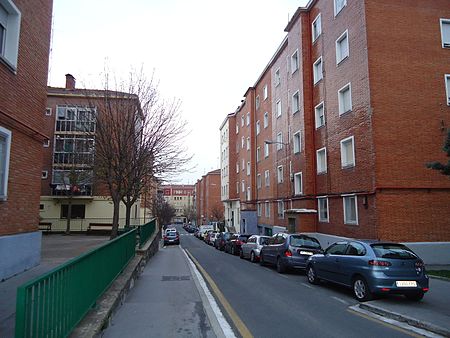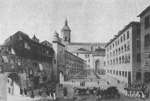Ariznabarra
1960s establishments in the Basque Country (autonomous community)Neighbourhoods in Vitoria-Gasteiz

Ariznabarra (Spanish: Ariznavarra) is a neighborhood in the southwest of Vitoria-Gasteiz, Basque Country, Spain.
Excerpt from the Wikipedia article Ariznabarra (License: CC BY-SA 3.0, Authors, Images).Ariznabarra
Toroko gazteluaren kalea/Calle Castillo del Toro, Vitoria-Gasteiz Ariznabarra
Geographical coordinates (GPS) Address Nearby Places Show on map
Geographical coordinates (GPS)
| Latitude | Longitude |
|---|---|
| N 42.8422 ° | E -2.6925 ° |
Address
Toroko gazteluaren kalea/Calle Castillo del Toro
Toroko gazteluaren kalea/Calle Castillo del Toro
01007 Vitoria-Gasteiz, Ariznabarra
Autonomous Community of the Basque Country, Spain
Open on Google Maps










